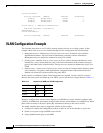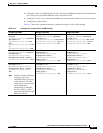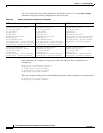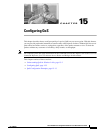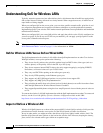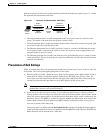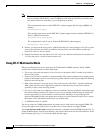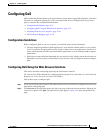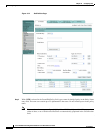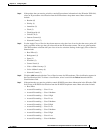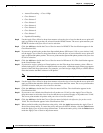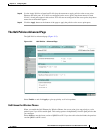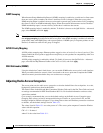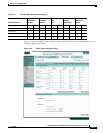
15-4
Cisco IOS Software Configuration Guide for Cisco Aironet Access Points
OL-11350-01
Chapter 15 Configuring QoS
Understanding QoS for Wireless LANs
Note This release continues to support existing 7920 wireless phone firmware. Do not attempt to use
the new standard (IEEE 802.11e draft 13) QBSS Load IE with the 7920 Wireless Phone until
new phone firmware is available for you to upgrade your phones.
This example shows how to enable IEEE 802.11 phone support with the legacy QBSS Load
element:
AP(config)# dot11 phone
This example shows how to enable IEEE 802.11 phone support with the standard (IEEE 802.11e
draft 13) QBSS Load element:
AP(config)# dot11 phone dot11e
This example shows how to stop or disable the IEEE 802.11 phone support:
AP(config)# no dot11 phone
3. Policies you create on the access point—QoS Policies that you create and apply to VLANs or to the
access point interfaces are third in precedence after previously classified packets and the QoS
Element for Wireless Phones setting.
4. Default classification for all packets on VLAN—If you set a default classification for all packets on
a VLAN, that policy is fourth in the precedence list.
Using Wi-Fi Multimedia Mode
When you enable QoS, the access point uses Wi-Fi Multimedia (WMM) mode by default. WMM
provides these enhancements over basic QoS mode:
• The access point adds each packet’s class of service to the packet’s 802.11 header to be passed to
the receiving station.
• Each access class has its own 802.11 sequence number. The sequence number allows a high-priority
packet to interrupt the retries of a lower-priority packet without overflowing the duplicate checking
buffer on the receiving side.
• WPA replay detection is done per access class on the receiver. Like 802.11 sequence numbering,
WPA replay detection allows high-priority packets to interrupt lower priority retries without
signalling a replay on the receiving station.
• For access classes that are configured to allow it, transmitters that are qualified to transmit through
the normal backoff procedure are allowed to send a set of pending packets during the configured
transmit opportunity (a specific number of microseconds). Sending a set of pending packets
improves throughput because each packet does not have to wait for a backoff to gain access; instead,
the packets can be transmitted immediately one after the other.
• U-APSD Power Save is enabled.
The access point uses WMM enhancements in packets sent to client devices that support WMM. The
access point applies basic QoS policies to packets sent to clients that do not support WMM.
Use the no dot11 qos mode wmm configuration interface command to disable WMM using the CLI. To
disable WMM using the web-browser interface, unselect the check boxes for the radio interfaces on the
QoS Advanced page. Figure 15-3 shows the QoS Advanced page.



